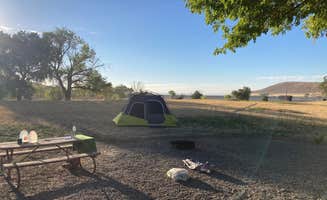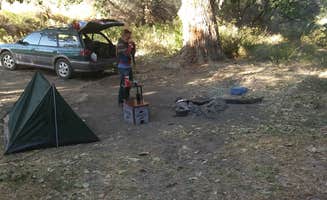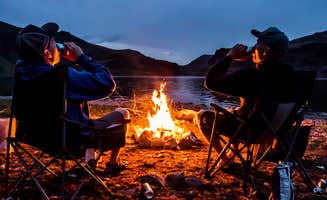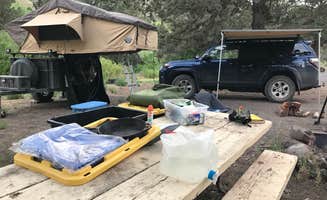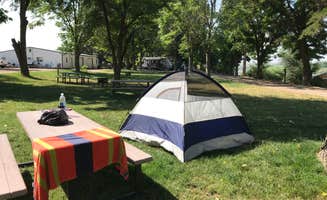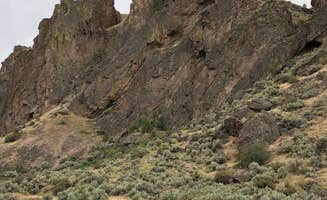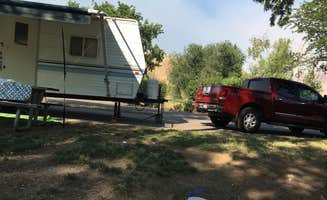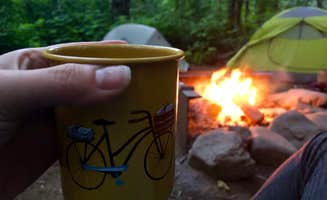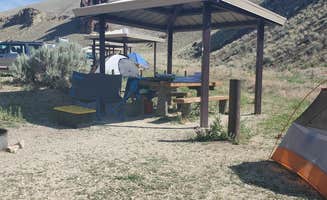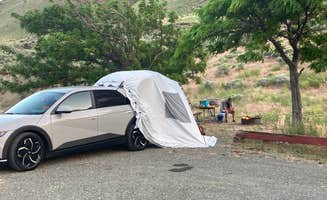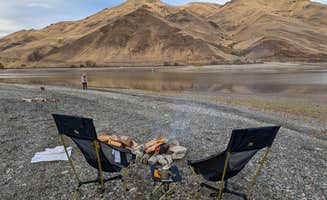The Harper region of Eastern Oregon sits at elevations ranging from 2,200 to 2,800 feet, creating a high desert environment with dramatic temperature shifts between day and night. Summer temperatures frequently exceed 100°F during July and August, while spring and fall camping offers more moderate conditions in the 70-85°F range. Many dispersed camping sites near Harper, Oregon require high-clearance vehicles to access, especially after rain when dirt roads become difficult to navigate.
What to do
**River fishing spots: ** Along the Owyhee River below the dam, there are multiple dispersed camping areas that provide direct access to trophy brown trout fishing. A camper noted, "If you enjoy Fly Fishing for Brown Trout, this place is awesome. There is dispersed camping all along the river below the dam. It is very rugged, but there are amenities for camping."
Hot springs access: Juntura Hot Springs Dispersed camping area offers free primitive sites with access to natural hot springs. The springs require wading across the river to reach them. As one visitor explained, "The spring is on the island at the tip of the horse shoe. We had to wade across the river to get to it. Make sure you have a capable AWD vehicle and can handle a bumpy road."
Lake activities: Lake Owyhee State Park provides water-based recreation at both the Indian Creek and McCormack campgrounds. The lake attracts various watercraft users. As one camper described, "The sites are well spaced out. It can be very hot in the summer here and my experience was it was very windy in the late afternoon and evening."
What campers like
Desert wildlife viewing: The camping areas around Harper feature diverse wildlife. At Cow Hollow Park, visitors report seeing "cows, owls, doves and magpies." The park's combination of open areas and trees creates good habitat for viewing various birds and small mammals.
Night sky clarity: Without light pollution, the Harper region offers exceptional stargazing opportunities. A camper at McCormack Campground mentioned, "The views are breathtaking and the park is surrounded by BLM land for plenty of hiking opportunities." Another visitor at Cow Hollow Park noted, "The starry nights are incredible!"
Quiet solitude: Many campers appreciate the remote nature of these sites. A visitor to Cow Hollow Park stated, "It's located on a dead-end road and is very peaceful. It's about 15 minutes from the nearest city and about 15 minutes from Snively Hot Springs." This isolation creates a true disconnection from urban environments.
What you should know
Water safety concerns: Several camping locations in the area have water quality issues. At Bully Creek Reservoir County Park, a visitor warned, "A big thing to make note of is that they do have water, but it is a very high concentration of arsenic in it, which they don't tell you about when you make a reservation or an any signage other than the bathroom door."
Road conditions: Access to many campsites requires careful driving on unpaved roads. For Bully Creek Park, one camper advised, "DO NOT take S. Road G! Go into Vale and take Graham to Bully Creek, it's paved all the way. The other road is 8 miles of rough dirt road through a cattle farm!"
Temperature management: The extreme heat in summer months requires preparation. In Bully Creek Reservoir County Park, a camper shared their experience: "The wind is epic. I was grateful to be in a vehicle with the torrential gale blowing everyone's tents halfway to Idaho. It's the kind of wind where you get dirt in your eyes and dust everywhere."
Tips for camping with families
Playground access: Cow Hollow Park offers extensive recreation facilities for children. According to a visitor, "Beautiful trees line Cow Hollow and history from American-Japanese work/labor camp back in 1942. The site takes donations but the city will tell you $10/night. BUT, even paying the $10, you have electric and water hook-ups, two baseball fields, two small parks, basketball/tennis court."
Educational opportunities: Farewell Bend State Recreation Area provides historical learning experiences alongside camping. A camper described it as "Farewell bend is on the Snake River and has plenty Oregon Trail history to boot. It has shade trees, which is special for the area."
Insect preparedness: Bugs can be problematic at many Harper area camping sites. A visitor to Farewell Bend reported, "Very many mosquitos, like swarms of them. Site was very flat and easy to park our 23' camper. Small trails good enough for a stroll but not long enough for a hike."
Tips from RVers
Site selection strategies: For RVs, careful site selection is important due to limited level areas in some campgrounds. At Vale Valley RV Park, a camper noted, "Beautiful, quiet park located in Vale Oregon. Large pull through full hookup sites with plenty of yard space and space between RVs."
Utility connections: Water access varies significantly between campgrounds. At Farewell Bend, one RVer shared, "Only the Brownlee loop was open in mid-March. There were plenty of sites to choose from with great views of the river. The water was off at sites, but the sites and bathrooms were good."
Accessibility challenges: Large RVs face challenges at some campgrounds. At Lake Owyhee State Park, a camper with a large rig advised, "We are seasoned 5th wheelers and went slow with no problem. While we were there a 42' 5th wheel came in with no problem as well. If you decide to bring a big rig especially the first time, suggest arriving/departing on a non weekend day to try and avoid meeting up with a boater on the single lane road."


